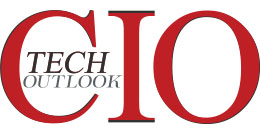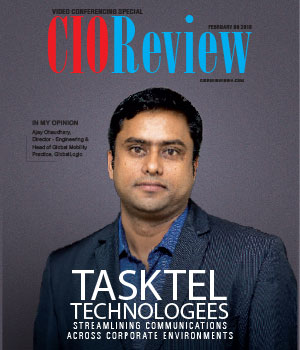
Building Resilient IT Infrastructure for the Evolving Pharma Industry
Satjeet Singh, Director IT, Pfizer India

Satjeet Singh, in an interaction with CIOTech Outlook shared his views on how IT infrastructure can be adapted to ensure compliance with global standards without compromising innovation, how organisations can build resilient IT infrastructures that mitigate risks related to cybersecurity threats and data privacy breaches and more.
Satjeet Singh is an IT visionary with over 33 years of expertise in digital transformation, ERP, manufacturing systems, and IT security. Specializing in EBR, plant automation, and AI, he’s passionate about building scalable, efficient tech solutions. Satjeet thrives on learning, innovation, and solving complex challenges across industries.
As the pharmaceutical industry faces increasing regulatory scrutiny, how can IT infrastructure be adapted to ensure compliance with global standards without compromising innovation?
Adapting IT infrastructure in the pharmaceutical industry to ensure compliance with global standards while fostering innovation requires a multifaceted approach. A risk-based compliance framework should be at the core, implementing GxP standards and ICH guidelines systematically across systems to manage regulatory requirements effectively.
Robust IT management practices, including automation are essential for maintaining system performance, security, and data integrity with audit trails and access controls leveraging technologies like blockchain to enhance traceability in key processes.
To support this, organizations must build capabilities like automated computer system validation (CSV) tools. Cloud technologies offer scalable solutions, but it is vital to use platforms that are already validated for GxP compliance, such as AWS or Microsoft Azure.
Finally, embedding a DevSecOps culture ensures that security and compliance checks are integrated into every stage of the development pipeline.
Given the sensitive nature of pharmaceutical data, how can organizations build resilient IT infrastructures that mitigate risks related to cybersecurity threats and data privacy breaches?
Building resilient IT infrastructures to safeguard against cybersecurity threats and data privacy breaches is a critical priority in the pharmaceutical industry.
This requires a comprehensive approach that integrates advanced security technologies, strategic frameworks, and proactive risk management practices. Multi-layered security protocols such as encryption, firewalls, intrusion detection systems, and regular patching form the foundation for protecting sensitive systems. In high-risk areas such as R&D and AI-driven processes, techniques such as data masking add an essential layer of security.
Advanced threat detection and response platforms, such as Extended Detection and Response (XDR) and Security Information and Event Management (SIEM) systems, play a vital role in providing visibility across networks and endpoints. When powered by AI, these tools can identify anomalies and detect breaches early, allowing for timely intervention.
A Zero Trust architecture is increasingly essential, ensuring that no entity - internal or external is trusted by default, and that every access request is authenticated and verified. Human factors must not be overlooked. Regular cybersecurity training empowers employees to recognize and respond to threats such as phishing attacks, significantly reducing the risk of breaches caused by human error.
Securing the broader supply chain is equally important. Collaborating closely with partners and suppliers to enforce high cybersecurity standards and routinely auditing their compliance helps mitigate third-party risks.
Building resilient IT infrastructure can be costly. How can pharmaceutical companies balance the need for cutting-edge IT solutions with the goal of optimizing costs?
Balancing the demand for cutting-edge IT solutions with the need for cost optimization is a complex but achievable goal in the pharmaceutical industry. One effective strategy is to adopt a hybrid cloud approach, leveraging the scalability and cost-efficiency of public cloud platforms for flexible workloads while keeping sensitive, regulated data on-premises. This balance allows companies to optimize infrastructure costs without compromising on compliance or security.
In parallel, implementing AI and automation technologies can significantly enhance productivity and reduce manual effort.
Outsourcing non-core IT activities to specialized vendors through IT-as-a-Service (ITaaS) models is another practical approach. This not only ensures access to high-quality services but also allows companies to adopt flexible, pay-as-you-go models and automated cloud backup systems - enabling them to focus resources on core scientific and commercial priorities.
Optimizing supply chain management through technology is equally important. Improved logistics, inventory control, and procurement systems can help reduce operational expenses while ensuring timely product delivery.
Data integrity is critical for pharmaceutical innovation, clinical trials, and regulatory submissions. How can IT leaders enhance data governance and disaster recovery planning to ensure the highest levels of data reliability and trust?
Enhancing data governance and disaster recovery planning in the pharmaceutical industry is essential for ensuring data reliability, and trust particularly in an environment governed by strict regulatory requirements.
A strong foundation begins with comprehensive data governance frameworks that clearly define data ownership, stewardship, and accountability, ensuring that all data management practices are aligned with both industry standards and regulatory mandates.
To support compliance, especially in GxP environments, organizations must implement audit-ready systems equipped with features such as e-signatures, version control, and audit trails, in line with CFR Part 11 requirements. Regular audits and reviews play a critical role in identifying gaps, rectifying any discrepancies or vulnerabilities, and ensuring that governance practices remain effective and compliant.
Disaster recovery planning must be both comprehensive and resilient, incorporating data backup, replication, and restoration procedures. These plans should be routinely tested and updated to reflect evolving threat landscapes and technological advancements. Leveraging cloud-based solutions also adds a layer of scalability and redundancy, offering secure and flexible platforms for both data storage and disaster recovery.
Finally, the human element is equally important. Investing in ongoing training and awareness programs helps build a culture of accountability and reinforce best practices, such as the ALCOA principles, to minimize errors and maintain high standards of data integrity across the organization.
Given the increasing complexity of drug development and supply chains, building resilient IT infrastructure is no longer optional for pharma companies. How can organizations proactively redesign their IT landscape to manage future disruptions?
To proactively redesign their IT landscape and better manage future disruptions, pharmaceutical companies must embrace a strategic and forward-looking approach that integrates digital innovation, operational agility, and cross-functional alignment. Central to this transformation is the adoption of digital technologies such as artificial intelligence, machine learning, and blockchain. These tools not only enhance data analytics and streamline operations but also empower organizations to anticipate and mitigate potential disruptions with greater accuracy.
Interoperability plays a vital role in this transformation. By developing interoperable systems that facilitate seamless data exchange across various platforms and stakeholders, companies can maintain operational continuity even in times of uncertainty. Orchestration tools further support this effort by enabling scalable, fault-tolerant deployments that enhance the resilience of IT systems.
A strong cybersecurity posture is equally critical. As digital ecosystems expand, the need to regularly update security protocols, conduct vulnerability assessments, and protect data integrity becomes paramount. In parallel, optimizing supply chain management through advanced technologies ensures visibility, predictability, and responsiveness across the value chain from R&D and clinical trials to manufacturing and distribution.
Artificial intelligence and predictive analytics further strengthen this framework by enabling companies to forecast demand shifts, assess risks in clinical trials, detect supply chain bottlenecks, and implement predictive maintenance strategies in manufacturing environments.
CIO Viewpoint
Why Foolproof Facial Recognition Is Key Against...
By Joseph Sudheer Thumma, Global CEO & MD, Magellanic Cloud
National Technology Day 2025: Powering Progress...
By CIOTech Outlook Team
Aligning IT Roadmap with Business Objectives: A...
By Subhash singh Punjabi, CISO & Head Enterprise Architecture, Deepak Fertilisers & Petrochemicals Corporation Ltd
CXO Insights
AI Collaboration Platforms Reshape...
By Sameer Raje, GM and Head of Business – India & SAARC, Zoom
Enhancing Productivity and Collaboration for a...
By CIOReviewIndia Team
Conferencing Solutions Modernizing the Workplace



.jpg)




